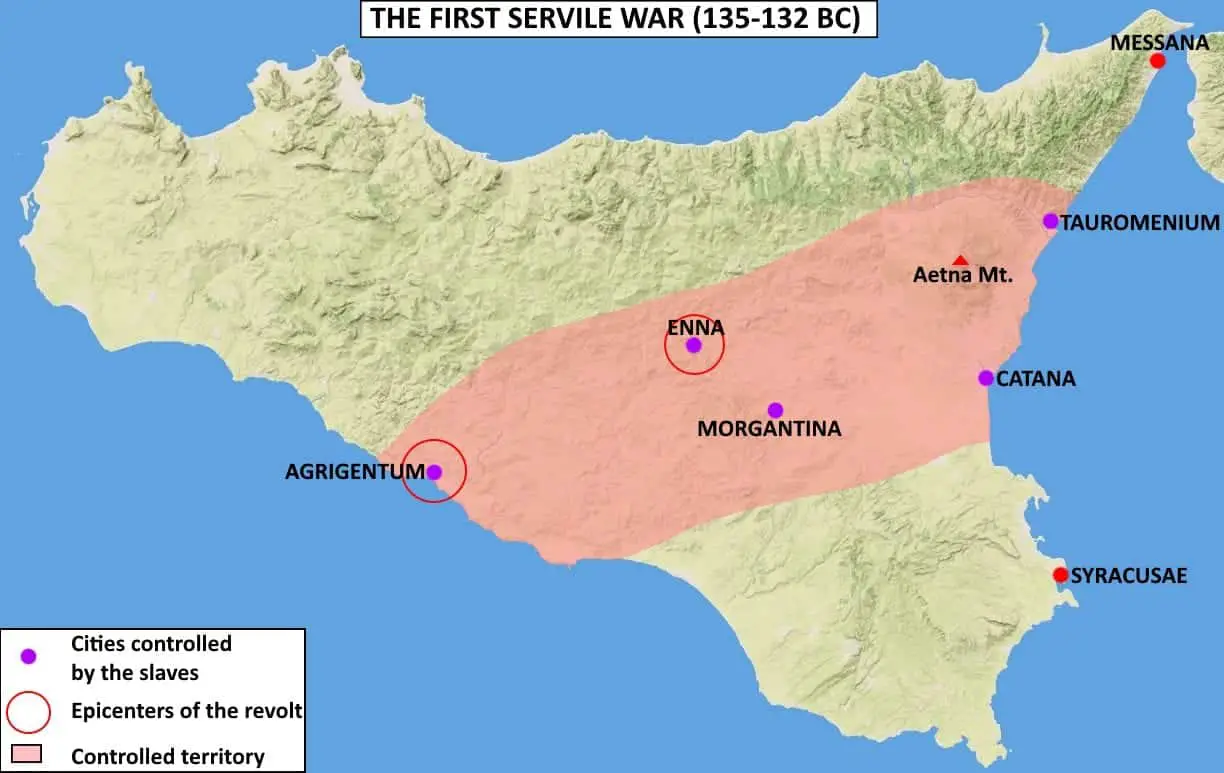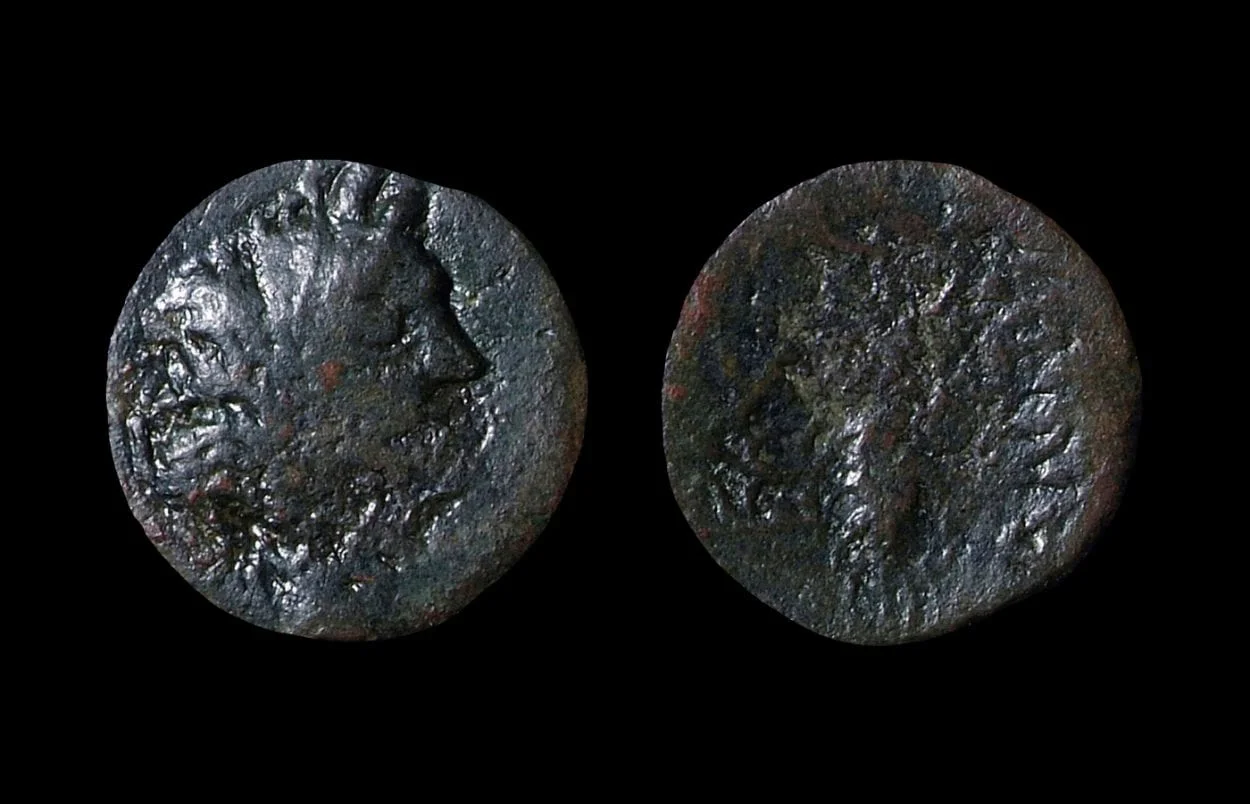Spartacus has become a legendary figure in history, who led a revolt against the Roman Republic during the Third Servile War. However, during the First Servile War of 135–132 BC, a slave revolt led by Eunus of Enna and Cleon, conquered large areas of Sicily and triggered several minor revolts in Italy, and as far as Delos in the Aegean Sea.
Eunus was a Roman slave from Apamea in Syria, who was enslaved to Antigenes of Enna. It was claimed that Eunus had supernatural powers as an oracle, who could blow fire from his mouth, and was reputed to receive divine visions from the goddess Atargatis, whom he identified with the Sicilian Demeter.
Following the expulsion of the Carthaginians during the Second Punic War, speculators from Rome bought large tracts of land across Sicily and brutally exploited the slaves abandoned by their Carthaginian overlords. A plantation system which took shape on the island, led to thousands of slaves being overworked or left to starve, resulting in slaves turning to banditry to survive.
In 135 BC, plantation slaves working the lands owned by Damophilus of Enna rose up in revolt, and turned to Eunus who had claimed to prophesize the uprising in a vision. Eunus organised the slaves into a warband and stormed the city of Enna, where they captured and butchered Damophilus, after torturing his wife and servants.

Following the fall of Enna, the revolt quickly spread, and Eunus proclaimed himself “King Antiochus of Syria” across the Sicilian territories they conquered and minted coins with his image.
On the south side of the island, 5,000 more slaves revolted under the command of Cleon (who would rise to the rank of general in the revolt) and captured the city of Agrigentum, leading to additional slaves joining the uprising that swelled their ranks to between 10,000 to 70,000 (although Diodorus Siculus accounts as many as 200,000).
In response, the Praetor Lucius Hypsaeus marched with a body of Sicilian militia to quash the revolt, but the slaves managed to rout his army. They then defeated three other praetors in succession and occupied large areas of the island by the end of the year.
In 133 BC, the Senate despatched consul Lucius Calpurnius Piso who recaptured the city of Messana and put 8,000 prisoners to death. The following year, consul Publius Rupulius recaptured the city of Tauromenium, and marched on Enna, resulting in the death of Cleon and around 20,000 prisoners across the island being crucified in retribution.
Eunus was captured after Tauromenium fell and was found hiding in a pit. He was taken to the city of Morgantina to await punishment, but he died of disease before he could be judged.
Header Image Credit : British Museum – CC BY 4.0





